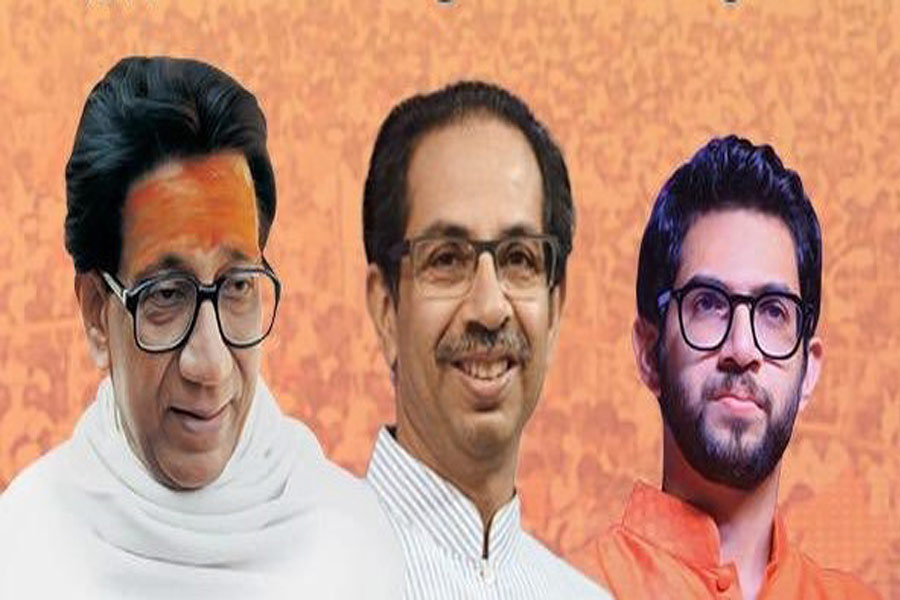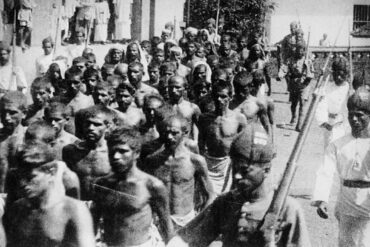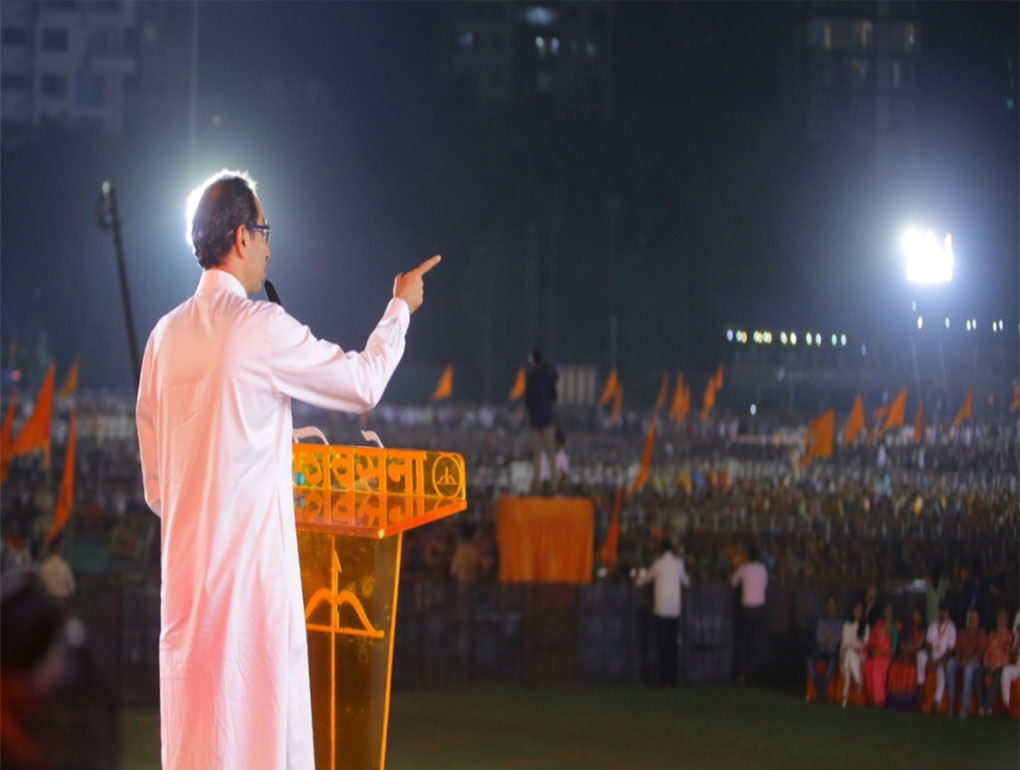In the 1997 UK general elections, the Labour party scripted one of the greatest comebacks ever. Ending 18 years of Conservative rule, in a landslide general election victory, it won a record tally of 419 seats- its best tally ever. Several incumbent ministers and high profile Conservative leaders lost their seats. In their worst electoral defeat since 1906, the Conservatives won a measly tally of 165 seats. At 43, Tony Blair replaced John Major to become the youngest British PM in more than a century.
When Blair was first elected to the parliament from Sedgefield in 1983, the situation was starkly different. In the general elections held that year, the Labour party under Michael Foot faced one of its worst electoral defeats, securing just 27.6% of the total vote. The Labour party’s manifesto was dubbed as ‘the longest suicide note in history’ for pledging unilateral nuclear disarmament and withdrawal from the European Common market. It went on to lose the 1987 and the 1992 polls. To make matters worse, The Social Democratic Party, consisting of a breakaway faction of Labour moderates was also eating into the Labour party’s voter base.
With the dwindling electoral fortunes of the Labour Party, the clamour for an ideological revamp started growing louder. The free-fall of the party coincided with the rise of the architects of ‘New Labour’ – Tony Blair, Gordon Brown, Peter Mandelson and Alastair Campbell. Their approach was simple: pay attention to and understand the changing concerns and expectations of the people and modify the party’s policies accordingly. The carefully crafted ideological and image makeover — the long, sustained and tightly choreographed ‘New Labour’ campaign and the near perfect execution helped Tony Blair to script Labour Party’s spectacular comeback after four consecutive defeats. To borrow a quote from Rajdeep Sardesai’s book 2014: The Election that changed India, Blair made a struggling labour party more acceptable and electable by discarding its ideological dogmas.
What Blair did in 1997 has been done in different parts of the world by different leaders. Narendra Modi, it can be said, pulled off a Tony Blair in 2014. While the BJP did not abandon its major poll plank of Hindutva, it did tone down on the Hindutva rhetoric and coupled the slightly diluted version of Hindutva with the narrative of ‘Vikaas’ and ‘Acche Din’. The promise of a brighter economic future and reforms and the ratcheting down of the ‘Hindutva’ pitch helped the BJP to expand its core voter base. The Sangh’s push for Swadeshi economics made way for a more market-friendly approach. By diluting (not completely discarding) some of its ideological dogmas, Modi’s rebranded BJP was able to woo newer voters who would have never been won over by the Hindutva appeal. Interestingly, a month after his victory, Modi thanked his partymen for pulling-off a Tony Blair and Barack Obama-like Campaign.
Six years on, BJP’s friend-turned-foe, Uddhav Thackeray seems to have taken a leaf out of Tony Blair’s book. When Blair and his associates were revamping the Labour party in the late ‘80s and early ‘90s, Bal Thackeray’s Shiv Sena was undergoing an ideological transition too. Founded in 1966 on the ‘Marathi Manoos’ plank, Thackeray’s Shiv Sena was finding it extremely difficult to expand its footprints in the hinterlands of the state. In a bid to become a pan-Maharashtra party, Thackeray embraced ‘Hindutva’ in the late ‘80s. Religion, not region, became the Shiv Sena’s raison d’etre. The Shiv Sena Supremo upped the ante with his anti-Muslim rhetoric and asked his Shiv Sainiks to bravely fight the ‘Dharmayuddha’ for the cause of a ‘Hindu Rastra’. The Shiv Sena’s alliance with the BJP was a move in the same direction. The Shiv Sena’s role in stoking communal passions during the 1992-93 riots have been well-documented. Throughout the 90s, the Shivsena Supremo and the party mouthpiece Saamna made headlines for their rabble-rousing speeches and incendiary comments against the Muslim community. But Muslims were not the only community at the receiving end of Shiv Sena’s politics of hate.
Journalist Sujata Anandan who has closely tracked the Shiv Sena over the years writes in her book Hindu Hriday Samrat: How Shiv Sena Changed Mumbai Forever: “Hate has always been the raison d’etre of the Shiv Sena. It was a party in search of a new enemy every decade or two, in order to keep the Marathi masses united behind the Sena tiger.”
Born in 1966, Shiv Sena’s enemies have changed over the years: the Communist parties and the city’s South Indian diaspora in the 60s and the 70s, the Muslims in the 80s and 90s and Mumbai’s North Indian migrants in the early 2000s. Every time the Shiv Sena Supremo trained his guns on a new enemy, the party’s loyal, committed foot soldiers, the Shiv Sainiks as they are called, have united with a new war cry. From Jaala Dalo, Jaal Dalo, Lal Bawta Jala Dalo, Lungi hatao, Pungi bajao in the 60s-70s to Garv se Kaho, hum Hindu hain in the 80s-90s to Ek Bihari, Sau Bimari in the 2000s. The enemies and the slogans changed but the principle remained the same: Hate, not power, was the biggest glue that held the Shiv Sena together.
A lot of water has flowed under the bridge since the early 2000s. The Sena Supremo is no more. The Shiv Sena has been split into two and it no longer enjoys monopoly over the Marathi Manoos. For the first time, members of the Thackeray clan ditched the tradition of contesting polls/holding constitutional posts and remote-controlling the government. After an acrimonious divorce with its longtime saffron spouse, the BJP, Shiv Sena is now the leader of a ragtag coalition of disparate constituents like the Congress and the NCP. Even as Uddhav Thackeray is leading the Maharashtra government’s battle against the coronavirus pandemic, he has been winning laurels for being a kinder, gentler and more inclusive leader than his contemporaries. Praise has come from unexpected quarters for Uddhav and his party.
Filmmaker Hansal Mehta tweeted:
I was at the receiving end of Shiv Sena and their goondaism in 2000. I’m still angry about how I was violated then. But that does not take away my objectivity and appreciation of @OfficeofUT & his conduct as Maharashtra CM. It is exemplary. And I’m not getting paid to say it.
— Hansal Mehta (@mehtahansal) April 9, 2020
When Hansal Mehta’s film Dil Pe Mat Le Yaar, a tale of Mumbai’s migrant workers, was released in 2000, a group of Shiv Sainiks had barged into his office and blackened his face. He was summoned to a rally at Khar Danda and forced to apologise in front of over 20,000 people. The attack which happened at a time when the Shiv Sena’s anti-migrant campaign was at its peak was later recreated by the director in his movie Shahid. The Shiv Sena was running a sustained campaign to ‘kick out’ the city’s North Indian migrants. Shops belonging to the North Indian community members were vandalised, Chhath Puja celebrations in the city were targeted and a group of Raj Thackeray’s (who was still in the Shiv Sena) supporters brutally thrashed out of state north Indian applicants who had come to the city to appear for the railway recruitment exam. Diktats were issued to put up Marathi signboards. Those who failed to do so were taught a lesson in Shivsena’s Thoskshahi style.
Sujata Anandan writes in her book Hindu Hriday Samrat: How Shiv Sena Changed Mumbai Forever: “During an epidemic of Malaria in the city, Thackeray wrote an editorial in Saamna titled ‘Ek Bihari, Sau Bimari’, In it, he lambasted Biharis for their allegedly unhygienic lifestyles which, he said, led to the spread of diseases affecting even his own Maharashtrians. He also blamed them for sullying Maharashtra’s polio-free record when one migrant worker’s child was discovered with the disease just as the state was about to be certified polio-free in 2007.
Contrast the Shiv Sena of the 2000s with today’s Shiv Sena. When migrant workers thronged near Bandra Railway station on April 14, instead of conveniently blaming the migrants for endangering the entire city and the health of the ‘Marathi Manoos’, Uddhav Thackeray during his address to the state switched from Marathi to Hindi and reassured the workers: “Lockdown does not mean that you have been locked up. There is no need to panic. You’re in my state and I assure you that you are safe in our state. We will take care of everything.”
Thackeray’s words of assurance were humane and much needed. But it also signaled the softening of his party’s anti-migrant stand.
Along with the North Indian migrants, the Muslim community has been the Shiv Sena’s favourite belting boy over the years. But when the Tablighi Jamaatis were being bashed left, right and centre for being ‘superspreaders’ by politicians and right-wing journalists, Thackeray remarked: Like Coronavirus there is another virus that is emerging which is threatening social harmony — the virus of fake news & communal hatred. We will save Maharashtra from this crisis. But, if someone circulates fake news or videos like commodities or notes being smeared with saliva or with inflammatory content, my law will catch up with them. They will not be spared. Don’t do this even for fun.
A week later, in his April 11 address, the CM making an appeal to all political parties said, “Let us not vitiate the atmosphere. I am imploring you all, let us not play politics here. Party politics must stop. Remember, the virus does not discriminate on caste, religion and political affiliations,” he said.
Uddhav’s efforts in maintaining social and communal harmony in the state during the pandemic scare has helped him win praises from the party’s detractors like Sudheendra Kulkarni and the journalist Nikhil Wagle who have been at the receiving end of the Shiv Sena’s hooliganism on several occasions in the past. While some observers have dubbed the Shiv Sena adopting a more inclusive approach as a political compulsion post its alliance with Congress-NCP, the winds of change had started blowing with Uddhav Thackeray taking over the reins of the party after the Sena Supremo Bal Thackeray’s death in 2012.
After Bal Thackeray’s death in 2012, most pundits and commentators were of the opinion that maintaining the Shiv Sena flock together would be an extremely difficult task for Uddhav. The soft-spoken and urbane Uddhav was in many ways the antithesis of the brute, belligerent, bombastic, rustic Shiv Sainiks he was leading. The overwhelming consensus among the rank and file of the party was that Uddhav lacked the firepower that his father possessed to keep the Shiv Sena going for more than four decades. Political obituaries were written claiming that there will be a mass exodus of the Shiv Sena’s party workers to the Maharashtra Navnirman Sena (MNS) led by Raj Thackeray, who seemed to have more in common with Bal Thackeray and his rabble rousing oratorical skills.
Eight years on, these theories have been debunked. Under Uddhav, the Shiv Sena’s electoral performances have been ever better than they were during the Bal Thackeray era. Much of the MNS sheen has worn off and the Shiv Sena is now leading the ruling Maha Vikas Aghadi in the state. But the bigger story is not how Uddhav Thackeray has managed to keep a firm grip on his party and improved its electoral fortunes but how he has slowly yet steadily brought in a paradigm shift in the party’s ideological orientation.
But Uddhav’s efforts to make the Shiv Sena a more inclusive and alternative party started way back in 2003. A year before the 2004 assembly elections, Uddhav Thackeray launched the ‘Mee Mumbaikar’ campaign in an attempt to reach out to the state’s non-Maharashtrian community.
Journalist Dhaval Kulkarni writes in his book The Cousins Thackeray: Uddhav, Raj And The Shadow Of Their Senas, “Hindi speakers had emerged as a formidable force in and around Mumbai with the Maharashtrians, who were the Shiv Sena’s natural catchment, being gradually outnumbered. It was necessary for it to rope in new voters considering that Marathi speakers were being gradually outnumbered by others in Mumbai.”.
“Uddhav may be a non-charismatic leader and a poor orator, but he is open-minded, liberal and a believer in inclusive politics,” said Sanjay Nirupam. “I had been stressing the need for berjeche rajkaran [a term popularised by late Congress stalwart Yashwantrao Chavan which means politics of inclusion] by the party. The Shiv Sena had alienated Muslims and sections of the Dalits and north Indians.
With a year to go for the 2004 state assembly polls, Uddhav launched a campaign termed “Mee Mumbaikar” to reach out to people across linguistic denominations. It was perched precariously from its very inception – reaching out to north Indians, who competed with Maharashtrians for access to jobs and resources – and stood the risk of the Sena drifting away from its core vote base. The ‘Mee Mumbaikar’ campaign never took off. It fizzled out after Raj Thackeray’s (who was still in the Shivsena) supporters beat up North Indian migrant workers in Kalyan. Raj Thackeray’s exit from the Shiv Sena and the fight between the two Senas to become the numero uno party of the Marathi Manoos compelled Bal Thackeray to silently discard his son’s ambitious pet project.

Since 2012, the Shiv Sena has remarkably softened its anti-migrant stand. Anyone who has followed Uddhav’s political career since his salad days would have been hardly surprised to see him reach out to the state’s migrant community instead of blaming them for endangering the Marathi Manoos. It also makes a lot of political sense to cut down on its anti-migrant rhetoric as the non- Maharashtrian population in Mumbai and Maharashtra has been consistently increasing over the years. The non-Maharashtrian population in Mumbai was reported to be as high as 60% in Mumbai in 2018. To maintain its hegemony over the maximum city, the Sena has no choice but to adapt according to the changing times and trends. It also helps the Shiv Sena to get an entry into the hinterlands of the state where the migrants versus the Marathi Manoos does not resonate with the voters.
The softening of the anti-migrant stand can be seen as a part of the Shiv Sena chief’s project to moderate his party in order to widen its voter base to make it more electable. In doing so, Uddhav seems to be following Tony Blair’s footsteps. Under Uddhav, the Shiv Sena has also consciously toned down its communal rhetoric and reached out to the Muslim community. When the anti-CAA protests had engulfed the country, Uddhav reportedly held meetings with social, political and religious leaders of the Muslim community assuring them that they will not be robbed of their rights or made to leave the country. While incidents of violence were reported in different parts of the country during the anti-CAA protests, Mumbai and other parts of the states remained largely peaceful with no internet shutdowns, bans on public gatherings or reports of police atrocities.
Over the last few months, the Shiv Sena has been lampooned as the ‘Sonia Sena’ for trying to ‘appease the minority community’. However, the ‘Sonia Sena’ charge may not hold water as the party had begun building bridges with the Muslim community way before it entered into an alliance with the Congress-NCP. In the 2017 BMC elections, the Shiv Sena fielded five Muslim candidates; out of them, two emerged victorious.
Behrampada in Bandra which houses mostly poor and lower middle class Muslims had seen one of the worst incidents of violence and bloodshed during the ‘92-93 riots. The Srikrishna committee had highlighted the involvement of the Shiv Sena’s cadre in the riots and also indicted Bal Thackeray for inciting communal violence. Putting the past behind, the Shiv Sena fileded Haji Mohammed Alim Khan from Behrampada. After his historic win, Khan had said “The Behrampada seat has always gone to either the Congress or the Samajwadi Party, and the Shiv Sena would never get more than 100-200 votes here. This time, this figure surged to 4,052 votes.”
A 2017 Hindustan Times report quotes Maulana Mehmood Dariyabadi, general secretary of the All India Ulema Council, a body of Muslim scholars, “This time, everyone knew the fight was between the BJP and the Shiv Sena. Between these two parties, not just the Muslims, but all communities with a more secular ideology, prefer the Shiv Sena over BJP. The BJP espouses the ideology of the Rashtriya Swayamsevak Sangh (RSS), which we think has a very fascist doctrine.”
In 2018, Sunil Prabhu, the Shiv Sena’s Chief Whip in the Maharashtra Legislative Assembly had batted for and voiced his party’s support for the implementation of a quota for Muslims in the state. In an interview to The Print, Prabhu had said “Muslims are a part of this country. They have been demanding reservations for the betterment of the community. If Shiv Sena is lending a voice to their demand so that the poor and oppressed get better opportunities, there is nothing wrong in that. It was always Balasaheb Thackeray’s ideology to strive for justice for the poor and the oppressed and Uddhav saheb follows the same ideology. Instead of looking at this from the prism of samaj (community) and jaat (caste), it should be seen as the Shiv Sena voicing the demands of the people.’’
In the run-up to the 2019 Lok Sabha polls, the Shiv Sena had started the ‘Mi Marathi Musalman’ campaign as a part of its Muslim outreach and also demanded for the implementation of Muslim quota in government jobs and educational institutions for the betterment of the community.
Another interesting development in the Shiv Sena has been the rise of Aditya Thackeray. The 29-year-old Thackeray scion became the first member from the Thackeray clan to contest and win an election when he got elected from Mumbai’s Worli constituency in 2019. In the late 2000s, following Bal Thackeray’s clarion call to oppose the ‘Hi-fi’ culture that was being propagated in the name of Valentine’s day, the Shiv Sainiks had unleashed havoc on the city’s couples on the eve of Valentine’s day. Today, the Shiv Sena’s vehement opposition to Valentine’s Day seems like a distant memory as Thackeray’s grandson, Aditya has been batting for the city’s nightlife ever since his entry into politics. In a landmark decision, Aditya, the tourism minister in Uddhav’s government, granted permission to pubs, eateries, shops and malls to remain open 24×7 in non-residential areas. Aditya’s campaign posters in his constituency of Worli were not just in Marathi but also in languages like Hindi, Gujarati, Urdu and some south Indian languages.
Interestingly, Aditya is a self-confessed Tony Blair fanboy. In an interview to Gurmehar Kaur he said, “This might sound strange, but one of the modern political thinkers, I am inspired by, would be Tony Blair. His ‘New Labour’ changed the direction of his party. It was Labour talking in modern times, Labour coming to power with modern ideas, reforming a lot of the party. So, in that sense, till today what he speaks is very sensible.’’
Educated in one of the country’s top most liberal institutions –St Xavier’s College – Mumbai, Aditya has emerged as a key cog in the Shiv Sena’s wheel. With Uddhav and Aditya occupying the top two positions in the Shiv Sena, it won’t be surprising to see Shiv Sena take a few more shocking and tough decisions to discard its ideological dogmas and reinvent itself. But there are chances that Shiv Sena’s attempts to modernise and be more inclusive could upset the ‘hardcore Shiv Sainik’.
As long as the Shiv Sena is able to offset its losses and cover the lost ground by adding to and expanding its core voter base by wooing voters with its new inclusive avatar, the experiment will continue. The experiment is fueled, partly by personal beliefs of its new leadership and, partly by conventional political wisdom and arithmetic. And hence to hail Shiv Sena as the new poster boy of secularism or liberalism or to ridicule it as the ‘Sonia Sena’ will be equally farcical and preposterous.







